 Facebook
Facebook
 X
X
 Instagram
Instagram
 TikTok
TikTok
 Youtube
Youtube
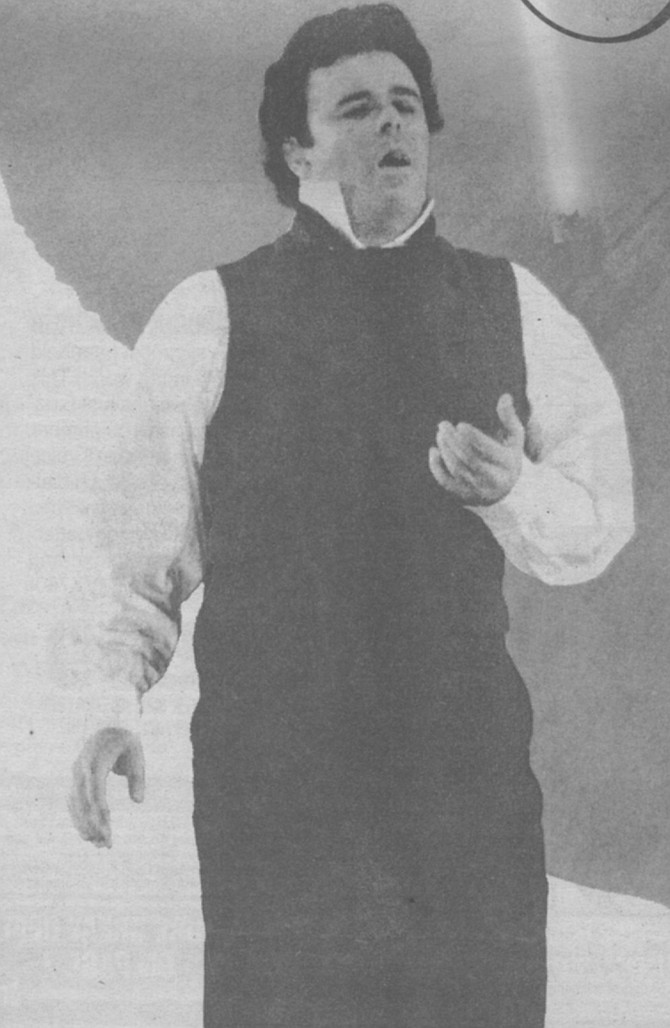
One of the first things I do, whenever I’m lucky enough to find myself wandering about backstage at the Civic Theatre during the San Diego Opera season, is check the Bullshitometer. This is a semicircular chart painted in peen, yellow, and red sections that rests on a desk presided over by John David Peters, the production carpenter in charge of the company's technical staff.
It provides a pretty accurate assessment from the stage crew's point of view of how the show currently in production is doing.
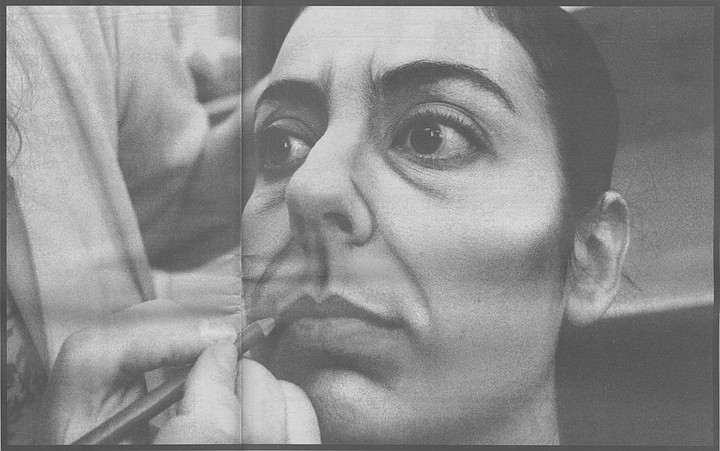
A movable arrow indicates the status, from a green box at left marked “Day Off’ to a red one all the way over on the right proclaiming “Total Bullshit.” I was relieved to note that on February 24, the day after the company’s fifth and last performance of Verdi’s Rigoletto and well into the second week of rehearsals on Rappaccini's Daughter, the season’s third offering, the arrow was nestling safely in the green on “This is an easy show.”
I found this reassuring because opera is by far the most difficult and demanding, as well as costly, of the theatrical arts. When something does go wrong, which is frequently, people are liable to start screaming at each other and blood can flow down the walls. Especially during the production of a brand-new work, with no precedents or traditions to fall back on. Rappaccini's Daughter was written by a little-known Mexican composer, Daniel Catan, and was to be the first Mexican opera ever to be professionally produced in this country. It had received a single previous airing in Mexico City in 1991, in which three members of San Diego’s cast had appeared, but no one here knew very much about it and ignorance can feed insecurities and the paranoia that sometimes runs rampant backstage. Whether you’re a member of the company or an outsider, it’s always useful to know what sort of atmosphere permeates the premises when you show up, as I did, at a rehearsal in progress.
The first person to introduce himself to me after I walked into the main rehearsal hall, a large rectangular windowless room below the stage, was the composer himself. He’s a tall, affable-looking, fair-skinned Mexican in his mid-40s, with thinning brown hair combed straight back and a small mustache. After confiding to me that the scene in progress depicted the first meeting in Dr. Rappaccini’s garden of the soprano and tenor leads, Catan handed me his original orchestral score of the piece, found the scene for me, then whispered, “I can’t imagine this being done any better than with this cast.”
I watched the scene, in which the two principals, mezzo-soprano Encarnacion Vazquez and tenor Fernando de la Mora, circled longingly about each other, singing in half-voice so as not to strain their precious vocal chords, a practice known in the opera house as “marking.” They were guided through their movements by the stage director, Johnathon Pape, and the conductor, Eduardo Diazmurtoz, with the assistance of stage manager Mary Yankee Peters, accompanist Adele Eslinger, and several other members of the production staff. “You see, very passionate, but they never touch,” Catdn said in my ear. The scene ended with the departure of the potential lovers and the appearance of Dr. Rappaccini himself, portrayed by baritone Oscar Samano, who sang about the tree of life he had created in his garden.
At the first break in the rehearsal, Pape cheerfully introduced himself to me, after which the conductor proved to be equally affable. Mary Peters had already explained to the company that I would be sort of hanging around during rehearsals and the five-performance run of the opera and that I had been cleared to do this by the general director, Ian Campbell, but even so I was astonished. I’ve been a professional singer and I’ve been around backstage at quite a few opera companies, but none as relaxed and easygoing as this one. At the Met in New York, for instance, security is as tight as it is at the Pentagon; people have to be documented, sign in and out, and be cleared each time by security guards. I commented on this to Mary Peters, whom I’ve known from previous bouts backstage here and in L.A., and told her I hoped the show wouldn’t be too easy or I’d have too little to write about. “Wait,” she said, grinning. “Right now we have about 300 light cues and 70 to 75 moves on the rail. It’s technically very complicated.”
I found out a lot more about this opera when I attended the so-called Artists’ Roundtable later that afternoon, a rap session between the artists and the public that the company puts on during the course of each production. It was held in the foyer of the mezzanine level, with an invited audience of season subscribers, about 80 strong and mostly middle-aged or older, sitting on folding chairs facing a dais containing Catin, Diazmunoz, Pape, VSzquez, and de la Mora. The session was presided over by Roger Pines, the company’s director of education, an articulate, energetic young man, who proceeded to introduce everybody to the audience and then asked Pape to tell us what Rappaccini's Daughter was all about.
This Pape undertook with enthusiasm. The director is tall, self-confident, young, with a long ponytail and a supremely positive approach to his work. Unlike most stage directors, he can also read music, which gives him an appreciation for the limitations the score of an opera can impose on the drama. He quickly outlined the plot for us. Based on a story by Nathaniel Hawthorne and a play adapted from it by Octavio Paz, the Nobel prize-winning Mexican poet, Rappaccini recounts the misadventures of a young Neapolitan medical student named Giovanni, who shows up in Padua in the mid-19th Century to complete his studies at the university. He takes a room that looks out over a neighbor’s garden full of fantastic-looking flowers and plants. He falls in love with the woman he sees in the garden, Beatriz, the daughter of the sinister Dr. Giacoma Rappaccini. Informed by another doctor and old family friend, Pietro Baglioni, that Beatriz never leaves the garden because she is the victim of her father’s dubious experiments, Giovanni invades the premises to woo her. It turns out that in his attempts to make his daughter immortal by nurturing her on poisons distilled from his plants, Rappaccini has made her lethal to others. Inevitably, by touching him, Beatriz infects Giovanni. When he attempts to cure her by making her drink an antidote Dr. Baglioni has given him, she dies and the garden withers around her. Not exactly a cheerful tale, but then most operas end in calamity.
“Of course, that’s only the surface level of the plot,” Pape explained. “It’s really a metaphysical love story, and the opera also works on a much more symbolic level.” He went on to talk about the gap in American life between the physical and the spiritual, whereas Mexican culture has a tradition of “magical realism” in which “the physical and spiritual worlds are not as separate.” He also revealed that the garden in this production would not be a real garden, in keeping with the very abstract nature of the piece.
This seemed to alarm Gatin, who quickly assured the audience that his opera was not all that abstract but actually portrayed “the kind of conflict you can experience in real life.” The composer referred to experiments going on in genetics today. “Is that good or evil?” he asked. “That sort of conflict is what this story is about. Faith and wanting to be like gods. It’s a love story that takes its meaning from the way we behave as humans.”
Catan, who speaks English flawlessly, with hardly a trace of an accent, charmed the audience out of its socks. Whereas the singers and the conductor spoke mainly about the technical aspects of the production, the composer discussed his aspirations, admitted a failure with a previous opera he had written, cited Mozart, Puccini, Debussy, and Richard Strauss as inspirations for the operatic style he was trying to achieve, and declared himself ecstatic over the sort of work the San Diego company was doing. “This is the ideal place to do this piece,” he said. “I was waiting for you.” When asked if he had any other operatic plans, he said, “I’m afraid I’m incorrigible” and talked about a possible commission for a new opera in 1996. Queried about the absence of a chorus in Rappaccini, which calls for only five principals and three offstage women’s voices in one scene, he cited expenses. “I decided no chorus, no children, and no animals,” he said, smiling.
During the course of the roundtable, Roger Pines played a brief recorded orchestral interlude to enable the audience to get some idea of the music. It sounded lush and faintly oriental, with lots of brasses, cymbals, and woodwinds. Unfortunately, it did not impress the woman sitting next to me, a chunky middle-aged blonde dressed in pink slacks and a brown checked jacket, who grumbled, “I hope it’s not all like that. Sounds pretty dumb.” Luckily, she seemed to be in the minority; most of the people present reacted favorably and expressed curiosity about the new work.
Modern opera is a hard sell everywhere these days. No one is more aware of that than Ian Campbell, who every year has to walk a tight line between giving the majority audience what it wants, which is mostly Puccini and the standard chestnuts like La Traviata and Carmen, and what he perceives as an artistic obligation to put on fresh productions of lesser-known works and, especially, of new ones. Everybody who cares about opera knows that the form will sink into decadence and die out unless the repertory can be periodically revitalized and updated. But the economic risks are overwhelming. Even by selling every seat in the house, no opera company can possibly break even these days and is ultimately dependent on donations to survive. A single fiasco from which the public stays away in hordes can create the sort of budget gap that donations can’t cover and can mire a company in debt, eventually even sink it.
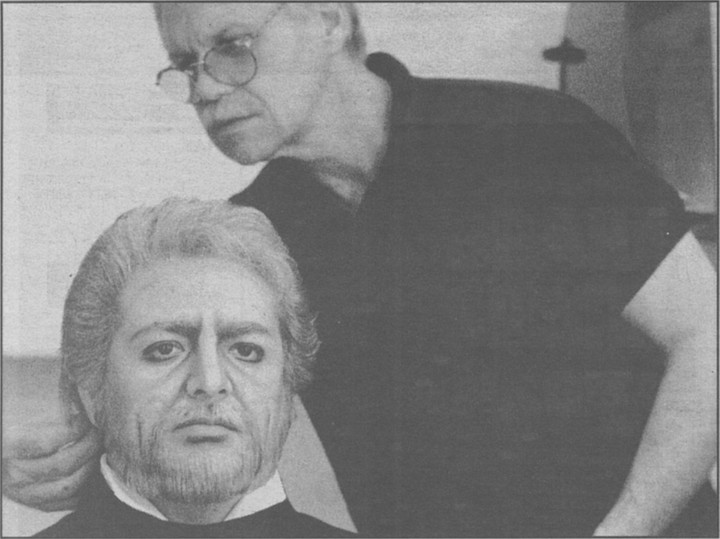
Campbell knows all about this. When he took over at San Diego 11 years ago, he inherited a company in fiscal disarray due to reckless overspending by his predecessor in the job, Tito Opobianco, whose artistic ambitions were subverted by his inability to marshal the support needed to pay for them. It took Campbell several years to restore order and to establish a fiscally responsible operation that now consists of a basic yearly repertory of Five performances each of five operas. He tries always to strike a balance between works he knows the audience will support, such as this year’s Rigoletto and The Tales of Hoffmann, and lesser-known pieces like Eugene Onegin and La Sonnambula. And in recent years, as he has managed to build up subscriptions and operate consistently in the black, he has begun to look for a way to promote the new and the adventurous.
What he came up with was a project called North American Voices, which he intends as a showcase for a series of operas by North American composers, one each season for the next four years. “It’s a way of packaging 20th-century opera for our audience, a marketing device,” Campbell said, when I dropped into his office one morning. “But I decided to do this out of a genuine, honest belief that North American composers have things to say that are worth hearing.”
The score of Rappaccini's Daughter, with a CD of excerpts from the original Mexico City production, arrived in the mail. Catdn had sent it to a number of other companies as well, but Campbell was the quickest to move on it. “First of all, I liked the idea of the Mexican connection, which makes a statement about this city,” he said. “Then I was struck by the power of the orchestration, a pulse that carries you along. It was music for the senses, music for the soul. I expect the audience to be overwhelmed.”
Perhaps best of all, the opera was economically feasible.
With only five principal singers and a unit set, it could be put on for $711,000, of which Campbell hoped to recoup about $550,000 through ticket sales, “if we’re lucky.” In the world of high Finance, you don’t launch a project knowing upfront it’s a loser, but in opera a reasonable deficit is regarded as a triumph. Campbell flew to Mexico City to confer with the composer, whom he found to be a pleasure to deal with, then set to work putting the production together, which included hiring the singers, the conductor, the director, the set, costume and lighting designers, and the rest of the production staff and crew.
Getting an opera off the ground, especially a new one, is an arduous and supremely risky enterprise, not unlike erecting an enormous palazzo out of cards; the smallest mishap could bring the project crashing down. Singers, for example, are subject to colds. If they get sick, substitutes can usually be found, even at the last minute, but not for a modern work nobody knows. Samano had come up with a scratchy throat that morning, eight days before opening, and de la Mora, who was tired from having sung in the Rigoletto performances while having simultaneously begun to rehearse Rappaccini, was sounding tentative. “We’ve become very religious this week,” Campbell said, smiling a little tightly.
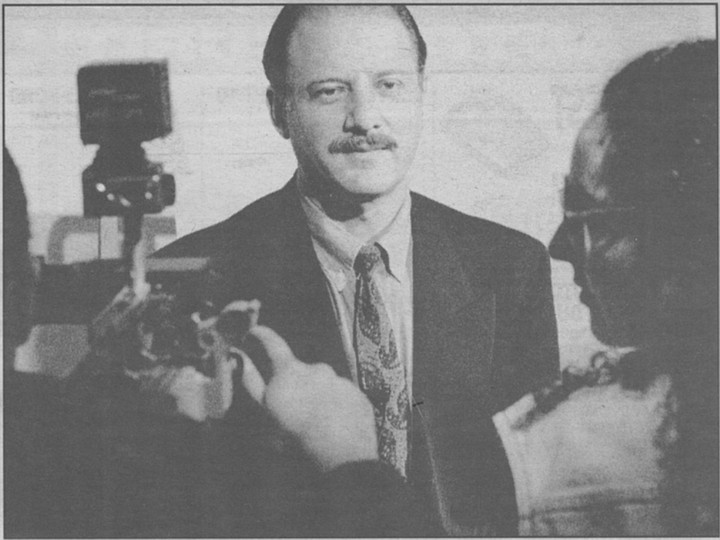
The company could not afford at this point even a minor disaster. Since Campbell had begun to plan his project and engage the artists, the world of American opera, especially in California, had been plunged into a crisis that was threatening the survival of a number of companies. Subscription and ticket sales were down everywhere due to the recession. San Francisco had canceled its summer season, Campbell informed me, and Opera Pacific in Costa Mesa had reported a huge slump in ticket sales even for such standard fare as Faust and The Merry Widow. Up in L.A., the word from an inside source was that the company there couldn’t sell anything that didn’t have superstar Placido Domingo in it.
In San Diego, subscriptions, which had hit a peak of over 11,000 in March 1993, had tumbled to about 9000, the worst Figure since 1991. Campbell had hoped that Onegin would sell about 90 percent of its seats but had to settle for 79 percent. Even Rigoletto had slumped several points from an expected 98 percent. In such circumstances, taking chances on unknown works could be construed as foolhardy. But Campbell is a tough cookie who has been through far more perilous times than these. “What we have to do as a company is get through this year and into the next one,” he said. “We don’t have a deficit yet and we’re unlikely to have one this year. And we’re going to have a success with Rappaccini, at least in terms of prestige.”
I found myself rooting for him, even though I hadn’t heard enough of Catan’s score to make a judgment of my own about it. The history of modem opera in this country is mostly a tale of failure, regardless of reviews or costly world-class productions, such as the one lavished by the Met last year on The Ghosts of Versailles, a lot of sound and fury signifying very little. It’s not always the audience’s fault that so little modern work has been incorporated into the basic repertory.
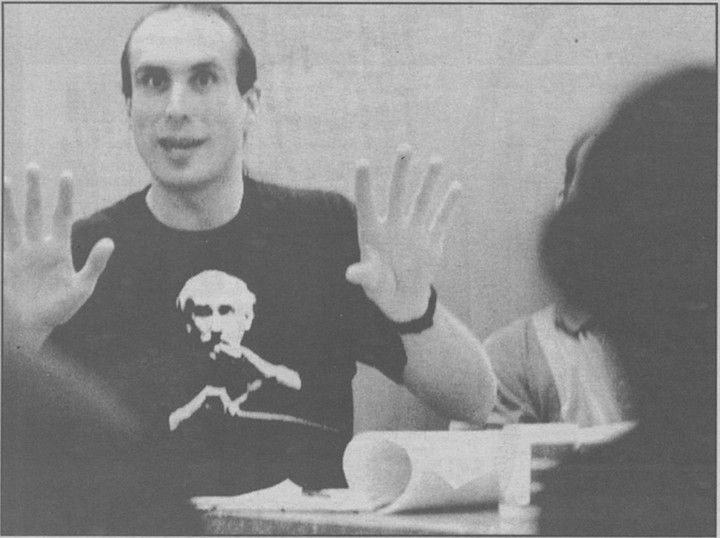
Ladies and gentlemen of the cast, to the stage, please,” Mary Peters’s voice sang out over the intercom system. It was seven o’clock Friday night, time for the company’s first rehearsal onstage. What the singers found when they showed up was a couple of steeply raked platforms — one representing Giovanni’s bedroom, the other Rappaccini’s garden — and a large blue panel, a jagged bright red stalactite and some red poles sticking up through the floor or jabbed into the panel. The look was minimalist and abstract, in contrast to the text, which referred to specific objects and images. The singers, however, were not so much concerned with the look of the piece as in keeping their balance while maneuvering about. During a scene in which Giovanni grabs Beatriz and she falls, Vazquez slid gracefully toward the footlights. “I give her a 5.7 for technical and a 5.9 for artistic impression,” an onlooker murmured.
It was a rehearsal with little time for nuances. Pape’s main concern was leading his cast through its basic movements, which he did in primitive but serviceable Spanish. “Ignacio, muevete al proscenio, mas a derecho, gracias. ” Scene by scene they walked through the whole piece, first in silence, then in sync to Eslinger’s formidable accompaniment in the pit. (A slender, attractive young woman, she can make an upright piano almost sound like a whole orchestra.) And as they worked through the action, the most important feature of the set design began to assert itself.
This consisted of 14 enormous blossoms of varying sizes painted on wooden cutouts that were to be lowered up and down and moved about during the course of the drama. Suspended on wires from the grid high above the stage and controlled by hand from the crew at the rail offstage right, these “flying fickle fingers of fate,” as Campbell dubbed them, were to be the key elements in the set created by John Conklin.
They were stunningly beautiful, exact re-creations of just the sort of flora that Rappaccini’s garden would have contained, but as the crew began to work with them, problems began to surface. For one thing, they made the singers nervous, especially after one giant blossom lightly skimmed the tenor during a crossover. Secondly, once in place they refused to stay still, but swayed noticeably, further distracting from the action. “We could arrange to inform the audience that there’s a wind blowing in the garden by adding a line for the singers,” a member of the staff suggested. “How about, 'Mucho viento eti el jarditt esta ttoche,?” Nobody laughed.
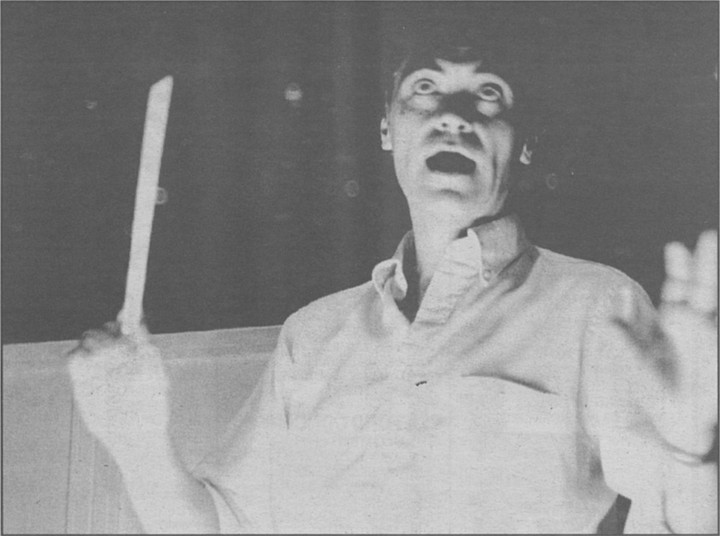
Matters became tense on Saturday, when the flowers continued to misbehave and it also became evident that Mimi Jordan Sherin’s lighting design would be enormously complicated. The crew, which had looked forward to an easy show, seemed harassed and edgy. Only John David Peters, who sports long hair and a full beard and seems to be everywhere at once backstage, expressed confidence in the outcome. He had been involved in difficult productions before, and he knew how good his staff was. “Mary can handle it,” he told me about the stage manager, who also happens to be his wife, “and Bob Dougherty is a top flyman.” It was Dougherty whose rail hands were attempting to master the fickle flowers. “Also, you want to get next to Conklin,” he advised me. “He’s the best at pulling everything together, a whiz.”
Until then I hadn’t paid much attention to Conklin. Considered one of the top stage designers in the world and a veteran of seven previous San Diego productions, Conklin does not thrust himself immediately to the foreground. A chunky, gray-haired bearded man in his mid-50s, he slumps like a pile of rumpled laundry in a seat halfway up the orchestra, just behind the production desk that functions as headquarters for the staff during rehearsals. He seems to have at least a dozen productions going on simultaneously all over the world, while also finding time to teach at New York University in Manhattan, his home base. Now, as problems became apparent, he began to intervene, not only in matters involving the set, but in every aspect of the endeavor. Whenever he had anything to say, he would lean forward in his seat to talk to the staff around Sherin or stroll calmly toward the stage.
His first recommendation regarding the flowers was that they would move less if brought in slower, a solution that seemed obvious to everyone only after he had made it. Then he began quietly to tone down some of Pape’s more esoteric flights with simple suggestions regarding movement and positions onstage. Like most directors, Pape tends to want a depth of expression from his performers that they can rarely achieve, especially under the stress of the physical demands singing imposes on the body. “See each other on the levels of the soul,” he instructed the lovers, who are bellowing high notes at each other during the scene. “When you die, let it be transcendent,” he told Vazquez, who was primarily preoccupied at the time with not sliding into the orchestra pit. Conklin’s hints invariably served to place the singers in positions that functioned on a practical level and freed them to relax into their characterizations. He did not, however, meddle with Pape’s concept, and to his credit, the director welcomed his help.
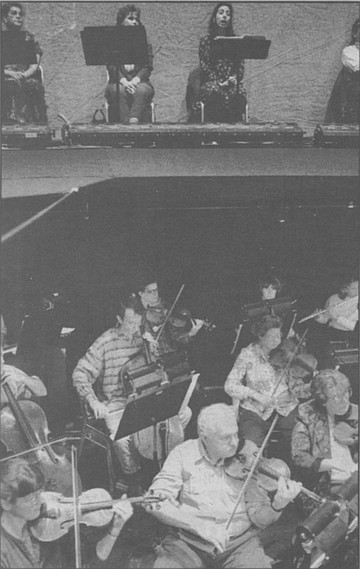
Despite all the hard work and the improvements being made in the operation of Conklin’s constantly moving set (“It’s not the tilt, it’s the angle of the dangle,” Campbell observed regarding one especially phallic blossom), everyone was aware that very little time remained before the first dress rehearsal on Tuesday. By union rules, Sunday had to be an off-day, which meant that most of the problems would have to be solved on Monday, and Sherin hadn’t yet hung all of her lights, let alone set the complicated cues that would illuminate the singers as well as Conklin’s flying floral display. The only person who seemed utterly unconcerned was costume designer Barbara Bush, whose austere, elegant clothes for the small cast had already been tried on and fitted. Besides, she was residing in splendor at the Grant, where the hotel management had installed her in the presidential suite on the mistaken assumption that she was that other Barbara Bush. “I’m paying for a single room, but they left me there anyway,” she said. “I’m thinking of throwing a party.” By Saturday night, however, everybody was too tense and too exhausted to party. On my way out I checked the Bullshitometer. Somebody had moved the arrow way over into the red on “Total Bullshit.”
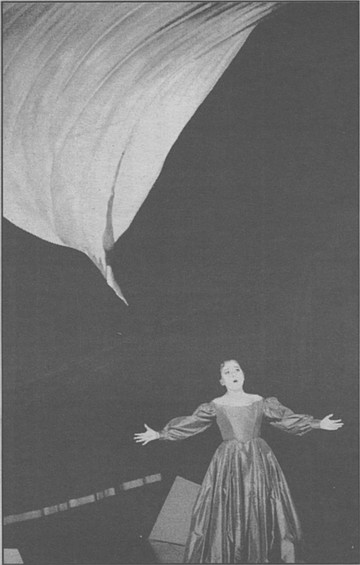
My favorite time during the course of any opera production is the sitzprobe, literally a sit-down rehearsal during which the cast perches on folding chairs in front of the drop curtain and sings through the score with the orchestra for the first time.
The atmosphere is usually relaxed and the singers can let fly without having to worry about costumes, props, and stage movements. Usually, they will mark when having to deal with high notes or other tiring passages, but the sitzprobe provides the first true indication of the musical quality of the full performance to come.
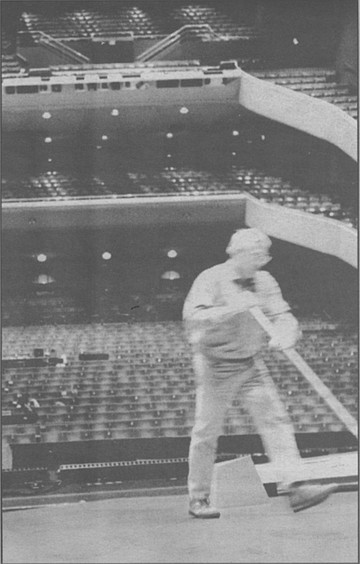
By this time I already knew that Campbell had assembled a potentially first-rate cast. The men — tenors de la Mora and Ignacio Clapps and baritone Simano — were strong vocally. Ellen Rabiner, the only American lead, had a big contralto and was a good character actress. The offstage voices of the flowers, sung by chorus members Patricia Minton, Andrea Mays, and Diane Winterton, were true and clean. And in mezzo Encarnacion Vizquez, the production had a genuine star. A tiny, dark-haired, very pretty young woman, she was almost unknown outside Mexico but clearly about to burst into bloom, like one of Conklin’s flowers, on the international scene. She had a voice of stunning beauty and phenomenal range, right up through an easy high C. Furthermore, she felt so secure of her vocal technique that most of the time during rehearsals she didn’t bother to mark but sang out. The one thing everybody in the company knew by this time was that she would wow any audience that heard her, a nice asset to count on when presenting an unknown work to a basically unsophisticated public.
I expected to enjoy myself, but what galvanized me into rapt attention at the sitzprobe was not the singing alone, but the power and beauty of the orchestral sound. Written for a 90-piece orchestra, Catan’s score is richly melodic and perfectly frames the vocal lines without resorting to cheap theatrics or obvious repetition. I thought immediately of Richard Strauss, whom Catan had cited as one of his models. The big, rich sound alternates with delicate, innovative touches, such as the use of a solo recorder in one scene, percussion instruments in others, while never overwhelming the vocalists. I realized for the First time that I was listening to an opera that could easily become a Fixture in the international repertory, no small achievement for a composer whose works are not often heard outside his native land.
Mexico has a rich musical tradition, both native and rooted in European models, but, according to Cat4n, “it’s pretty well impossible to make a living in Mexico as a serious composer. The money available from commissions just about pays the copying costs.” Operatic activity is mostly limited to the Compania Nacional de Opera, which puts on an uneven yearly season of half a dozen works in Mexico City, and a few smaller groups scattered across the country. Although there is a large and enthusiastic following for opera and a host of promising young singers, not much can be accomplished anywhere without government support. “Eighty-five to 90 percent of the financing depends on government subsidies,” I was told one morning over coffee by Diazmunoz, himself a composer of some note. A cheerful, slender, darkly handsome man in his 40s, he described without bitterness how he was removed from his post a few years ago as conductor of a symphony orchestra he had almost singlehandedly developed into a first-rate ensemble. He was deposed by an incoming governor who felt an obligation to a less talented colleague. “Maestro, I want to thank you for all of your services, but I am in debt to my friend,” the governor explained. “I owe him this payroll.”
In such a climate, mediocrity is rewarded and political patronage essential. Diazmurioz recalls his previous experiences with the national opera company as frustrating and the orchestra as terrible. “It has some fabulous musicians, hut as a group they don’t work, they’re a pain in the neck. Just making them play the right notes and the right dynamics is a war.” Catan and Diazmunoz have been friends and colleagues for 18 years, ever since the conductor studied under Catan in the late 1970s. “We are like brothers,” Catan had told me. “We think and feel the same way about music.” When I suggested to Diazmunoz that the success of Rappaccini's Daughter might do much to help the cause of Mexican music in general, he said, “The American success of the opera will arouse as much envy in Mexico as praise.” He himself has spent the last five years working mainly outside his native land. “My wife and I were thinking of moving but changed our minds,” he said. “We love to live in Mexico, but not to work.”
The happiest person at the end of the sitzprobe seemed to he Catan, who was hearing his score performed for the first time exactly as he had conceived it. Having grown up in a musical household, with a father who loved to sing popular songs and who had raised his three boys to become pianists so they could accompany him, Catan had dreamt and worked all his life to achieve exactly what was happening to him now. Nor was he much concerned whether or not his opera would make him famous in Mexico or advance a particular image of Mexico abroad. “Mexicans, too, have a right to he international,” he said. “We’re expected to do our act, but I would like to claim some freedom from the body of art that we’ve inherited.”
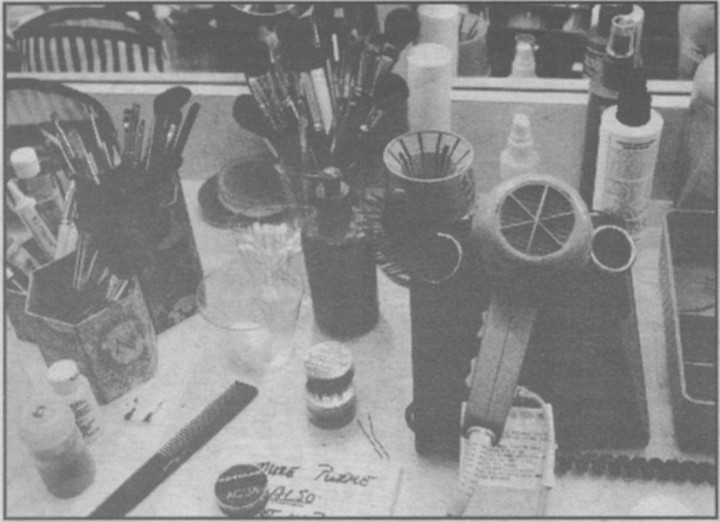
By the time of the last dress rehearsal, on March 3, the Bullshitometer was safely back in the green on “Designer Buys. Not that all the problems had been solved, by any means. Conklin’s flowers were still proving cumbersome to move about and still tended to sway in place, while Sherin still had to set most of her light cues for act two. As far as the crew was concerned, this dress, despite the presence of an invited audience, would be a tech rehearsal. The rail cues numbered about 100, four times the average, and Mary Peters figured there might eventually be about 85 light cues. But the work had been proceeding smoothly, with a minimum of fuss, and the atmosphere backstage was cheerfully optimistic. Even the singers were behaving themselves. Samano had begun to sing full-voice, in a rich lyric baritone, and de la Mora was sounding more rested and confident.
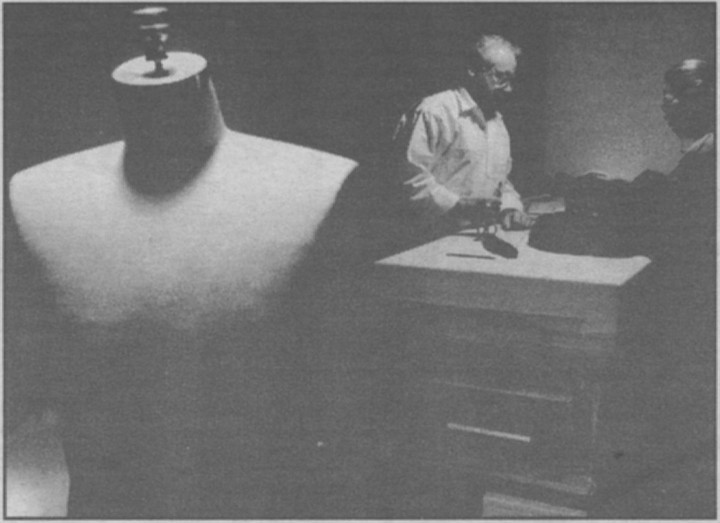
Campbell was a constant presence, more involved in this production than anyone had ever seen him. No detail had been too small to escape his attention, from the tentative way one of the singers persistently attacked a particular phrase to the failure of a crew member to mask a wing properly, thus allowing a section of the audience to peer backstage. His commitment was not disruptive, but that of a good general in the field, concerned only with the total success of the enterprise. It extended even to the curtain calls, which Pape had set on Wednesday. “Remember, next time people will say, ‘Oh, it’s another Catan opera,’ ” he instructed the composer, who had seemed undecided about taking a bow. “This is your debut in the United States. Take the stage; be proud of what you’ve done.” “You should know by now I’m utterly shameless,” Catan had replied, grinning.
Thursday’s invited audience consisted mainly of about 2000 high school children, 300 of them bussed in from Tijuana. They were hooked from the moment the curtain rose on Conklin’s abstract set, with its brightly painted platforms and flats, neon tubing, and, especially, the gigantic flowers that in act one, brilliantly illuminated by Sherin’s design, seemed to hover in space like apparitions from a Jurassic garden. “That’s neat!” said a young girl sitting directly behind me, as the first of Conklin’s blossoms loomed out of the void. “That’s one big mother of a flower!”
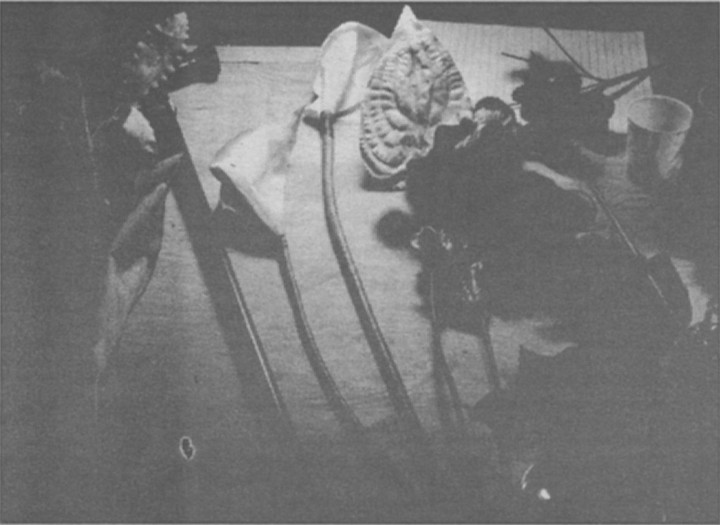
Unencumbered by the encrustations of tradition and prejudice, the youthful audience loved the opera and was able to follow the story closely, thanks to the supertitles periodically flashed above the proscenium arch. The kids talked through much of the action, commenting and reacting to the happenings onstage, and gave the cast, especially the romantic leads, an ovation that included screams and whistles of approbation. Backstage, after the curtain calls, the company looked radiant. Campbell, Catan, Diazmunoz, Pape, and the artists spent several minutes hugging and kissing each other. Every theatrical production is an adventure into the unknown, but doubly so when the vehicle is a modern opera by a little-known composer whose work will be critically measured against the standards set by Verdi, Wagner, Puccini, and company. It’s tough being a rookie in that league.
After the Thursday dress, the opening seemed something of an anticlimax to me. The main problem left to solve was accommodating a horde of Mexican dignitaries, many of whom had suddenly decided to show up at the last minute and also expected to attend the formal post-performance banquet at the Westgate to which invitations had been sent out weeks before. An entire planeload of Catan’s family and friends was also on hand, and the lobby on opening night, with everyone dressed to kill, was a triumph of bilingual panache. The festivities went off without incident and the audience responded enthusiastically to the opera itself, though not with the untamed exuberance of the kids. Best of all, largely unnoted by the audience, the crew achieved the small miracle of mastering every one of its rail and light cues, with Peters presiding coolly over her backstage console, with its two television screens, like the submarine commander in Das Boot. “The first time we did the show with all of the cues was on opening night,” she said later. It occurred to me that they should all have been out there taking bows along with the performers, but then that would have broken tradition and in an opera house tradition is king.
Of the ten local reviews Rappaccini’s Daughter received, all but one were excellent, even curmudgeonly Martin Bemheimer’s in the L.A. Times. Box office sales didn’t quite come up to Campbell’s hopes, but before the last performance on March 16, when prices for all tickets were reduced to $10,1300 seats sold in two days, proving that opera could be popular if it weren’t so costly. And that night CBS-TV showed up to tape the performance for a future segment on its prestigious Sunday Morning show.
Catan lingered on past the closing night, partly to discuss the likelihood of future commissions now coming in from other companies and symphony orchestras. Campbell could and did take satisfaction from the successful launching of his North American Voices project; he had gambled and won in a game far tougher than a Las Vegas craps table, at last establishing his San Diego company as a creative force on the international scene. But it took John David Peters to put the whole experience into perspective for me. “You know, I’m not a real fan of modern music,” he told me over a beer one night, “but this score is pretty beguiling. The whole experience ranks up there with one of the best we’ve had. But then the Bullshitometer has hovered in the green all year.”


One of the first things I do, whenever I’m lucky enough to find myself wandering about backstage at the Civic Theatre during the San Diego Opera season, is check the Bullshitometer. This is a semicircular chart painted in peen, yellow, and red sections that rests on a desk presided over by John David Peters, the production carpenter in charge of the company's technical staff.
It provides a pretty accurate assessment from the stage crew's point of view of how the show currently in production is doing.

A movable arrow indicates the status, from a green box at left marked “Day Off’ to a red one all the way over on the right proclaiming “Total Bullshit.” I was relieved to note that on February 24, the day after the company’s fifth and last performance of Verdi’s Rigoletto and well into the second week of rehearsals on Rappaccini's Daughter, the season’s third offering, the arrow was nestling safely in the green on “This is an easy show.”
I found this reassuring because opera is by far the most difficult and demanding, as well as costly, of the theatrical arts. When something does go wrong, which is frequently, people are liable to start screaming at each other and blood can flow down the walls. Especially during the production of a brand-new work, with no precedents or traditions to fall back on. Rappaccini's Daughter was written by a little-known Mexican composer, Daniel Catan, and was to be the first Mexican opera ever to be professionally produced in this country. It had received a single previous airing in Mexico City in 1991, in which three members of San Diego’s cast had appeared, but no one here knew very much about it and ignorance can feed insecurities and the paranoia that sometimes runs rampant backstage. Whether you’re a member of the company or an outsider, it’s always useful to know what sort of atmosphere permeates the premises when you show up, as I did, at a rehearsal in progress.
The first person to introduce himself to me after I walked into the main rehearsal hall, a large rectangular windowless room below the stage, was the composer himself. He’s a tall, affable-looking, fair-skinned Mexican in his mid-40s, with thinning brown hair combed straight back and a small mustache. After confiding to me that the scene in progress depicted the first meeting in Dr. Rappaccini’s garden of the soprano and tenor leads, Catan handed me his original orchestral score of the piece, found the scene for me, then whispered, “I can’t imagine this being done any better than with this cast.”
I watched the scene, in which the two principals, mezzo-soprano Encarnacion Vazquez and tenor Fernando de la Mora, circled longingly about each other, singing in half-voice so as not to strain their precious vocal chords, a practice known in the opera house as “marking.” They were guided through their movements by the stage director, Johnathon Pape, and the conductor, Eduardo Diazmurtoz, with the assistance of stage manager Mary Yankee Peters, accompanist Adele Eslinger, and several other members of the production staff. “You see, very passionate, but they never touch,” Catdn said in my ear. The scene ended with the departure of the potential lovers and the appearance of Dr. Rappaccini himself, portrayed by baritone Oscar Samano, who sang about the tree of life he had created in his garden.
At the first break in the rehearsal, Pape cheerfully introduced himself to me, after which the conductor proved to be equally affable. Mary Peters had already explained to the company that I would be sort of hanging around during rehearsals and the five-performance run of the opera and that I had been cleared to do this by the general director, Ian Campbell, but even so I was astonished. I’ve been a professional singer and I’ve been around backstage at quite a few opera companies, but none as relaxed and easygoing as this one. At the Met in New York, for instance, security is as tight as it is at the Pentagon; people have to be documented, sign in and out, and be cleared each time by security guards. I commented on this to Mary Peters, whom I’ve known from previous bouts backstage here and in L.A., and told her I hoped the show wouldn’t be too easy or I’d have too little to write about. “Wait,” she said, grinning. “Right now we have about 300 light cues and 70 to 75 moves on the rail. It’s technically very complicated.”
I found out a lot more about this opera when I attended the so-called Artists’ Roundtable later that afternoon, a rap session between the artists and the public that the company puts on during the course of each production. It was held in the foyer of the mezzanine level, with an invited audience of season subscribers, about 80 strong and mostly middle-aged or older, sitting on folding chairs facing a dais containing Catin, Diazmunoz, Pape, VSzquez, and de la Mora. The session was presided over by Roger Pines, the company’s director of education, an articulate, energetic young man, who proceeded to introduce everybody to the audience and then asked Pape to tell us what Rappaccini's Daughter was all about.
This Pape undertook with enthusiasm. The director is tall, self-confident, young, with a long ponytail and a supremely positive approach to his work. Unlike most stage directors, he can also read music, which gives him an appreciation for the limitations the score of an opera can impose on the drama. He quickly outlined the plot for us. Based on a story by Nathaniel Hawthorne and a play adapted from it by Octavio Paz, the Nobel prize-winning Mexican poet, Rappaccini recounts the misadventures of a young Neapolitan medical student named Giovanni, who shows up in Padua in the mid-19th Century to complete his studies at the university. He takes a room that looks out over a neighbor’s garden full of fantastic-looking flowers and plants. He falls in love with the woman he sees in the garden, Beatriz, the daughter of the sinister Dr. Giacoma Rappaccini. Informed by another doctor and old family friend, Pietro Baglioni, that Beatriz never leaves the garden because she is the victim of her father’s dubious experiments, Giovanni invades the premises to woo her. It turns out that in his attempts to make his daughter immortal by nurturing her on poisons distilled from his plants, Rappaccini has made her lethal to others. Inevitably, by touching him, Beatriz infects Giovanni. When he attempts to cure her by making her drink an antidote Dr. Baglioni has given him, she dies and the garden withers around her. Not exactly a cheerful tale, but then most operas end in calamity.
“Of course, that’s only the surface level of the plot,” Pape explained. “It’s really a metaphysical love story, and the opera also works on a much more symbolic level.” He went on to talk about the gap in American life between the physical and the spiritual, whereas Mexican culture has a tradition of “magical realism” in which “the physical and spiritual worlds are not as separate.” He also revealed that the garden in this production would not be a real garden, in keeping with the very abstract nature of the piece.
This seemed to alarm Gatin, who quickly assured the audience that his opera was not all that abstract but actually portrayed “the kind of conflict you can experience in real life.” The composer referred to experiments going on in genetics today. “Is that good or evil?” he asked. “That sort of conflict is what this story is about. Faith and wanting to be like gods. It’s a love story that takes its meaning from the way we behave as humans.”
Catan, who speaks English flawlessly, with hardly a trace of an accent, charmed the audience out of its socks. Whereas the singers and the conductor spoke mainly about the technical aspects of the production, the composer discussed his aspirations, admitted a failure with a previous opera he had written, cited Mozart, Puccini, Debussy, and Richard Strauss as inspirations for the operatic style he was trying to achieve, and declared himself ecstatic over the sort of work the San Diego company was doing. “This is the ideal place to do this piece,” he said. “I was waiting for you.” When asked if he had any other operatic plans, he said, “I’m afraid I’m incorrigible” and talked about a possible commission for a new opera in 1996. Queried about the absence of a chorus in Rappaccini, which calls for only five principals and three offstage women’s voices in one scene, he cited expenses. “I decided no chorus, no children, and no animals,” he said, smiling.
During the course of the roundtable, Roger Pines played a brief recorded orchestral interlude to enable the audience to get some idea of the music. It sounded lush and faintly oriental, with lots of brasses, cymbals, and woodwinds. Unfortunately, it did not impress the woman sitting next to me, a chunky middle-aged blonde dressed in pink slacks and a brown checked jacket, who grumbled, “I hope it’s not all like that. Sounds pretty dumb.” Luckily, she seemed to be in the minority; most of the people present reacted favorably and expressed curiosity about the new work.
Modern opera is a hard sell everywhere these days. No one is more aware of that than Ian Campbell, who every year has to walk a tight line between giving the majority audience what it wants, which is mostly Puccini and the standard chestnuts like La Traviata and Carmen, and what he perceives as an artistic obligation to put on fresh productions of lesser-known works and, especially, of new ones. Everybody who cares about opera knows that the form will sink into decadence and die out unless the repertory can be periodically revitalized and updated. But the economic risks are overwhelming. Even by selling every seat in the house, no opera company can possibly break even these days and is ultimately dependent on donations to survive. A single fiasco from which the public stays away in hordes can create the sort of budget gap that donations can’t cover and can mire a company in debt, eventually even sink it.

Campbell knows all about this. When he took over at San Diego 11 years ago, he inherited a company in fiscal disarray due to reckless overspending by his predecessor in the job, Tito Opobianco, whose artistic ambitions were subverted by his inability to marshal the support needed to pay for them. It took Campbell several years to restore order and to establish a fiscally responsible operation that now consists of a basic yearly repertory of Five performances each of five operas. He tries always to strike a balance between works he knows the audience will support, such as this year’s Rigoletto and The Tales of Hoffmann, and lesser-known pieces like Eugene Onegin and La Sonnambula. And in recent years, as he has managed to build up subscriptions and operate consistently in the black, he has begun to look for a way to promote the new and the adventurous.
What he came up with was a project called North American Voices, which he intends as a showcase for a series of operas by North American composers, one each season for the next four years. “It’s a way of packaging 20th-century opera for our audience, a marketing device,” Campbell said, when I dropped into his office one morning. “But I decided to do this out of a genuine, honest belief that North American composers have things to say that are worth hearing.”
The score of Rappaccini's Daughter, with a CD of excerpts from the original Mexico City production, arrived in the mail. Catdn had sent it to a number of other companies as well, but Campbell was the quickest to move on it. “First of all, I liked the idea of the Mexican connection, which makes a statement about this city,” he said. “Then I was struck by the power of the orchestration, a pulse that carries you along. It was music for the senses, music for the soul. I expect the audience to be overwhelmed.”
Perhaps best of all, the opera was economically feasible.
With only five principal singers and a unit set, it could be put on for $711,000, of which Campbell hoped to recoup about $550,000 through ticket sales, “if we’re lucky.” In the world of high Finance, you don’t launch a project knowing upfront it’s a loser, but in opera a reasonable deficit is regarded as a triumph. Campbell flew to Mexico City to confer with the composer, whom he found to be a pleasure to deal with, then set to work putting the production together, which included hiring the singers, the conductor, the director, the set, costume and lighting designers, and the rest of the production staff and crew.
Getting an opera off the ground, especially a new one, is an arduous and supremely risky enterprise, not unlike erecting an enormous palazzo out of cards; the smallest mishap could bring the project crashing down. Singers, for example, are subject to colds. If they get sick, substitutes can usually be found, even at the last minute, but not for a modern work nobody knows. Samano had come up with a scratchy throat that morning, eight days before opening, and de la Mora, who was tired from having sung in the Rigoletto performances while having simultaneously begun to rehearse Rappaccini, was sounding tentative. “We’ve become very religious this week,” Campbell said, smiling a little tightly.

The company could not afford at this point even a minor disaster. Since Campbell had begun to plan his project and engage the artists, the world of American opera, especially in California, had been plunged into a crisis that was threatening the survival of a number of companies. Subscription and ticket sales were down everywhere due to the recession. San Francisco had canceled its summer season, Campbell informed me, and Opera Pacific in Costa Mesa had reported a huge slump in ticket sales even for such standard fare as Faust and The Merry Widow. Up in L.A., the word from an inside source was that the company there couldn’t sell anything that didn’t have superstar Placido Domingo in it.
In San Diego, subscriptions, which had hit a peak of over 11,000 in March 1993, had tumbled to about 9000, the worst Figure since 1991. Campbell had hoped that Onegin would sell about 90 percent of its seats but had to settle for 79 percent. Even Rigoletto had slumped several points from an expected 98 percent. In such circumstances, taking chances on unknown works could be construed as foolhardy. But Campbell is a tough cookie who has been through far more perilous times than these. “What we have to do as a company is get through this year and into the next one,” he said. “We don’t have a deficit yet and we’re unlikely to have one this year. And we’re going to have a success with Rappaccini, at least in terms of prestige.”
I found myself rooting for him, even though I hadn’t heard enough of Catan’s score to make a judgment of my own about it. The history of modem opera in this country is mostly a tale of failure, regardless of reviews or costly world-class productions, such as the one lavished by the Met last year on The Ghosts of Versailles, a lot of sound and fury signifying very little. It’s not always the audience’s fault that so little modern work has been incorporated into the basic repertory.

Ladies and gentlemen of the cast, to the stage, please,” Mary Peters’s voice sang out over the intercom system. It was seven o’clock Friday night, time for the company’s first rehearsal onstage. What the singers found when they showed up was a couple of steeply raked platforms — one representing Giovanni’s bedroom, the other Rappaccini’s garden — and a large blue panel, a jagged bright red stalactite and some red poles sticking up through the floor or jabbed into the panel. The look was minimalist and abstract, in contrast to the text, which referred to specific objects and images. The singers, however, were not so much concerned with the look of the piece as in keeping their balance while maneuvering about. During a scene in which Giovanni grabs Beatriz and she falls, Vazquez slid gracefully toward the footlights. “I give her a 5.7 for technical and a 5.9 for artistic impression,” an onlooker murmured.
It was a rehearsal with little time for nuances. Pape’s main concern was leading his cast through its basic movements, which he did in primitive but serviceable Spanish. “Ignacio, muevete al proscenio, mas a derecho, gracias. ” Scene by scene they walked through the whole piece, first in silence, then in sync to Eslinger’s formidable accompaniment in the pit. (A slender, attractive young woman, she can make an upright piano almost sound like a whole orchestra.) And as they worked through the action, the most important feature of the set design began to assert itself.
This consisted of 14 enormous blossoms of varying sizes painted on wooden cutouts that were to be lowered up and down and moved about during the course of the drama. Suspended on wires from the grid high above the stage and controlled by hand from the crew at the rail offstage right, these “flying fickle fingers of fate,” as Campbell dubbed them, were to be the key elements in the set created by John Conklin.
They were stunningly beautiful, exact re-creations of just the sort of flora that Rappaccini’s garden would have contained, but as the crew began to work with them, problems began to surface. For one thing, they made the singers nervous, especially after one giant blossom lightly skimmed the tenor during a crossover. Secondly, once in place they refused to stay still, but swayed noticeably, further distracting from the action. “We could arrange to inform the audience that there’s a wind blowing in the garden by adding a line for the singers,” a member of the staff suggested. “How about, 'Mucho viento eti el jarditt esta ttoche,?” Nobody laughed.

Matters became tense on Saturday, when the flowers continued to misbehave and it also became evident that Mimi Jordan Sherin’s lighting design would be enormously complicated. The crew, which had looked forward to an easy show, seemed harassed and edgy. Only John David Peters, who sports long hair and a full beard and seems to be everywhere at once backstage, expressed confidence in the outcome. He had been involved in difficult productions before, and he knew how good his staff was. “Mary can handle it,” he told me about the stage manager, who also happens to be his wife, “and Bob Dougherty is a top flyman.” It was Dougherty whose rail hands were attempting to master the fickle flowers. “Also, you want to get next to Conklin,” he advised me. “He’s the best at pulling everything together, a whiz.”
Until then I hadn’t paid much attention to Conklin. Considered one of the top stage designers in the world and a veteran of seven previous San Diego productions, Conklin does not thrust himself immediately to the foreground. A chunky, gray-haired bearded man in his mid-50s, he slumps like a pile of rumpled laundry in a seat halfway up the orchestra, just behind the production desk that functions as headquarters for the staff during rehearsals. He seems to have at least a dozen productions going on simultaneously all over the world, while also finding time to teach at New York University in Manhattan, his home base. Now, as problems became apparent, he began to intervene, not only in matters involving the set, but in every aspect of the endeavor. Whenever he had anything to say, he would lean forward in his seat to talk to the staff around Sherin or stroll calmly toward the stage.
His first recommendation regarding the flowers was that they would move less if brought in slower, a solution that seemed obvious to everyone only after he had made it. Then he began quietly to tone down some of Pape’s more esoteric flights with simple suggestions regarding movement and positions onstage. Like most directors, Pape tends to want a depth of expression from his performers that they can rarely achieve, especially under the stress of the physical demands singing imposes on the body. “See each other on the levels of the soul,” he instructed the lovers, who are bellowing high notes at each other during the scene. “When you die, let it be transcendent,” he told Vazquez, who was primarily preoccupied at the time with not sliding into the orchestra pit. Conklin’s hints invariably served to place the singers in positions that functioned on a practical level and freed them to relax into their characterizations. He did not, however, meddle with Pape’s concept, and to his credit, the director welcomed his help.

Despite all the hard work and the improvements being made in the operation of Conklin’s constantly moving set (“It’s not the tilt, it’s the angle of the dangle,” Campbell observed regarding one especially phallic blossom), everyone was aware that very little time remained before the first dress rehearsal on Tuesday. By union rules, Sunday had to be an off-day, which meant that most of the problems would have to be solved on Monday, and Sherin hadn’t yet hung all of her lights, let alone set the complicated cues that would illuminate the singers as well as Conklin’s flying floral display. The only person who seemed utterly unconcerned was costume designer Barbara Bush, whose austere, elegant clothes for the small cast had already been tried on and fitted. Besides, she was residing in splendor at the Grant, where the hotel management had installed her in the presidential suite on the mistaken assumption that she was that other Barbara Bush. “I’m paying for a single room, but they left me there anyway,” she said. “I’m thinking of throwing a party.” By Saturday night, however, everybody was too tense and too exhausted to party. On my way out I checked the Bullshitometer. Somebody had moved the arrow way over into the red on “Total Bullshit.”

My favorite time during the course of any opera production is the sitzprobe, literally a sit-down rehearsal during which the cast perches on folding chairs in front of the drop curtain and sings through the score with the orchestra for the first time.
The atmosphere is usually relaxed and the singers can let fly without having to worry about costumes, props, and stage movements. Usually, they will mark when having to deal with high notes or other tiring passages, but the sitzprobe provides the first true indication of the musical quality of the full performance to come.

By this time I already knew that Campbell had assembled a potentially first-rate cast. The men — tenors de la Mora and Ignacio Clapps and baritone Simano — were strong vocally. Ellen Rabiner, the only American lead, had a big contralto and was a good character actress. The offstage voices of the flowers, sung by chorus members Patricia Minton, Andrea Mays, and Diane Winterton, were true and clean. And in mezzo Encarnacion Vizquez, the production had a genuine star. A tiny, dark-haired, very pretty young woman, she was almost unknown outside Mexico but clearly about to burst into bloom, like one of Conklin’s flowers, on the international scene. She had a voice of stunning beauty and phenomenal range, right up through an easy high C. Furthermore, she felt so secure of her vocal technique that most of the time during rehearsals she didn’t bother to mark but sang out. The one thing everybody in the company knew by this time was that she would wow any audience that heard her, a nice asset to count on when presenting an unknown work to a basically unsophisticated public.
I expected to enjoy myself, but what galvanized me into rapt attention at the sitzprobe was not the singing alone, but the power and beauty of the orchestral sound. Written for a 90-piece orchestra, Catan’s score is richly melodic and perfectly frames the vocal lines without resorting to cheap theatrics or obvious repetition. I thought immediately of Richard Strauss, whom Catan had cited as one of his models. The big, rich sound alternates with delicate, innovative touches, such as the use of a solo recorder in one scene, percussion instruments in others, while never overwhelming the vocalists. I realized for the First time that I was listening to an opera that could easily become a Fixture in the international repertory, no small achievement for a composer whose works are not often heard outside his native land.
Mexico has a rich musical tradition, both native and rooted in European models, but, according to Cat4n, “it’s pretty well impossible to make a living in Mexico as a serious composer. The money available from commissions just about pays the copying costs.” Operatic activity is mostly limited to the Compania Nacional de Opera, which puts on an uneven yearly season of half a dozen works in Mexico City, and a few smaller groups scattered across the country. Although there is a large and enthusiastic following for opera and a host of promising young singers, not much can be accomplished anywhere without government support. “Eighty-five to 90 percent of the financing depends on government subsidies,” I was told one morning over coffee by Diazmunoz, himself a composer of some note. A cheerful, slender, darkly handsome man in his 40s, he described without bitterness how he was removed from his post a few years ago as conductor of a symphony orchestra he had almost singlehandedly developed into a first-rate ensemble. He was deposed by an incoming governor who felt an obligation to a less talented colleague. “Maestro, I want to thank you for all of your services, but I am in debt to my friend,” the governor explained. “I owe him this payroll.”
In such a climate, mediocrity is rewarded and political patronage essential. Diazmurioz recalls his previous experiences with the national opera company as frustrating and the orchestra as terrible. “It has some fabulous musicians, hut as a group they don’t work, they’re a pain in the neck. Just making them play the right notes and the right dynamics is a war.” Catan and Diazmunoz have been friends and colleagues for 18 years, ever since the conductor studied under Catan in the late 1970s. “We are like brothers,” Catan had told me. “We think and feel the same way about music.” When I suggested to Diazmunoz that the success of Rappaccini's Daughter might do much to help the cause of Mexican music in general, he said, “The American success of the opera will arouse as much envy in Mexico as praise.” He himself has spent the last five years working mainly outside his native land. “My wife and I were thinking of moving but changed our minds,” he said. “We love to live in Mexico, but not to work.”
The happiest person at the end of the sitzprobe seemed to he Catan, who was hearing his score performed for the first time exactly as he had conceived it. Having grown up in a musical household, with a father who loved to sing popular songs and who had raised his three boys to become pianists so they could accompany him, Catan had dreamt and worked all his life to achieve exactly what was happening to him now. Nor was he much concerned whether or not his opera would make him famous in Mexico or advance a particular image of Mexico abroad. “Mexicans, too, have a right to he international,” he said. “We’re expected to do our act, but I would like to claim some freedom from the body of art that we’ve inherited.”

By the time of the last dress rehearsal, on March 3, the Bullshitometer was safely back in the green on “Designer Buys. Not that all the problems had been solved, by any means. Conklin’s flowers were still proving cumbersome to move about and still tended to sway in place, while Sherin still had to set most of her light cues for act two. As far as the crew was concerned, this dress, despite the presence of an invited audience, would be a tech rehearsal. The rail cues numbered about 100, four times the average, and Mary Peters figured there might eventually be about 85 light cues. But the work had been proceeding smoothly, with a minimum of fuss, and the atmosphere backstage was cheerfully optimistic. Even the singers were behaving themselves. Samano had begun to sing full-voice, in a rich lyric baritone, and de la Mora was sounding more rested and confident.

Campbell was a constant presence, more involved in this production than anyone had ever seen him. No detail had been too small to escape his attention, from the tentative way one of the singers persistently attacked a particular phrase to the failure of a crew member to mask a wing properly, thus allowing a section of the audience to peer backstage. His commitment was not disruptive, but that of a good general in the field, concerned only with the total success of the enterprise. It extended even to the curtain calls, which Pape had set on Wednesday. “Remember, next time people will say, ‘Oh, it’s another Catan opera,’ ” he instructed the composer, who had seemed undecided about taking a bow. “This is your debut in the United States. Take the stage; be proud of what you’ve done.” “You should know by now I’m utterly shameless,” Catan had replied, grinning.
Thursday’s invited audience consisted mainly of about 2000 high school children, 300 of them bussed in from Tijuana. They were hooked from the moment the curtain rose on Conklin’s abstract set, with its brightly painted platforms and flats, neon tubing, and, especially, the gigantic flowers that in act one, brilliantly illuminated by Sherin’s design, seemed to hover in space like apparitions from a Jurassic garden. “That’s neat!” said a young girl sitting directly behind me, as the first of Conklin’s blossoms loomed out of the void. “That’s one big mother of a flower!”

Unencumbered by the encrustations of tradition and prejudice, the youthful audience loved the opera and was able to follow the story closely, thanks to the supertitles periodically flashed above the proscenium arch. The kids talked through much of the action, commenting and reacting to the happenings onstage, and gave the cast, especially the romantic leads, an ovation that included screams and whistles of approbation. Backstage, after the curtain calls, the company looked radiant. Campbell, Catan, Diazmunoz, Pape, and the artists spent several minutes hugging and kissing each other. Every theatrical production is an adventure into the unknown, but doubly so when the vehicle is a modern opera by a little-known composer whose work will be critically measured against the standards set by Verdi, Wagner, Puccini, and company. It’s tough being a rookie in that league.
After the Thursday dress, the opening seemed something of an anticlimax to me. The main problem left to solve was accommodating a horde of Mexican dignitaries, many of whom had suddenly decided to show up at the last minute and also expected to attend the formal post-performance banquet at the Westgate to which invitations had been sent out weeks before. An entire planeload of Catan’s family and friends was also on hand, and the lobby on opening night, with everyone dressed to kill, was a triumph of bilingual panache. The festivities went off without incident and the audience responded enthusiastically to the opera itself, though not with the untamed exuberance of the kids. Best of all, largely unnoted by the audience, the crew achieved the small miracle of mastering every one of its rail and light cues, with Peters presiding coolly over her backstage console, with its two television screens, like the submarine commander in Das Boot. “The first time we did the show with all of the cues was on opening night,” she said later. It occurred to me that they should all have been out there taking bows along with the performers, but then that would have broken tradition and in an opera house tradition is king.
Of the ten local reviews Rappaccini’s Daughter received, all but one were excellent, even curmudgeonly Martin Bemheimer’s in the L.A. Times. Box office sales didn’t quite come up to Campbell’s hopes, but before the last performance on March 16, when prices for all tickets were reduced to $10,1300 seats sold in two days, proving that opera could be popular if it weren’t so costly. And that night CBS-TV showed up to tape the performance for a future segment on its prestigious Sunday Morning show.
Catan lingered on past the closing night, partly to discuss the likelihood of future commissions now coming in from other companies and symphony orchestras. Campbell could and did take satisfaction from the successful launching of his North American Voices project; he had gambled and won in a game far tougher than a Las Vegas craps table, at last establishing his San Diego company as a creative force on the international scene. But it took John David Peters to put the whole experience into perspective for me. “You know, I’m not a real fan of modern music,” he told me over a beer one night, “but this score is pretty beguiling. The whole experience ranks up there with one of the best we’ve had. But then the Bullshitometer has hovered in the green all year.”
Comments